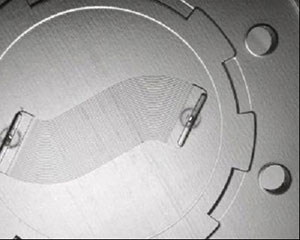Adding bits of things together – such as 3D printing – to make a thing presents a different set of challenges to taking bits off to make a thing – such as sculpting. Making a thing on a large scale presents a different set of challenges to making things on a small scale. Blend these factors together and things get quite complicated. Here, let’s look at a recent example by Potomac Photonics, which combines technologies to solve a client’s brief with innovative — and complex — results.
Potomac Photonics was asked to produce a micro-fluidic device for a healthcare company. They attacked the problem with some of their host of high tech tools. The team combined high resolution 3D Printing with UV laser micro-machining to yield a part that neither technology alone would have technically achieved in a cost-effective manner relevant for their client’s needs. Potomac Photonics offers a range of highly repeatable laser micro-machining solutions for apps that range from prototyping through to end production in most materials (eg. polymers, metals, ceramic, glass).

UV laser micro-machining was required for the micro element of the design: The micro-fluidic device required channels sized at just 10 x 10 microns. This intricacy is beyond almost all current methods of 3D printing, two photon polymerisation is a 3D additive method that works upon this level between the imperceptible and infinitesimal, but grating or etching away the surface of the macro part to build up again at the micro using a multimillion dollar machine is one for the research lab, not the production lab.
Potomac President and CEO Mike Adelstein gave a nice summary of the project: “In each instance, the tool we used was the right one for the job. Not only could our 3D Printer make the macro parts, they could do so very cost effectively. Laser micro–machining would not have made sense from a technical or cost perspective. But for the channels, it was the perfect complementary tool.”


